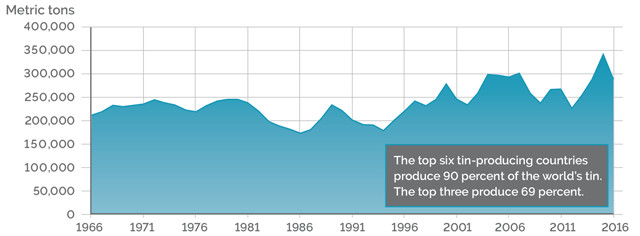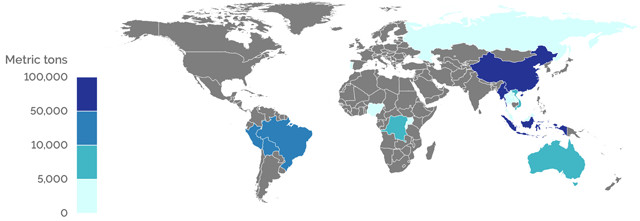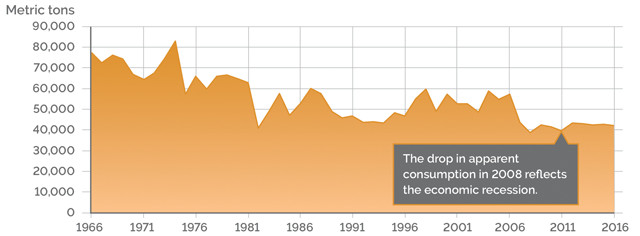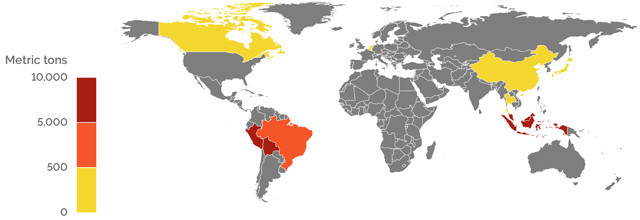
by U.S. Geological Survey Tuesday, July 3, 2018
By C. Schuyler Anderson, USGS mineral commodity specialist
GEOLOGIC OCCURENCE
The main source of tin is cassiterite (SnO2), a tin oxide mineral; cassiterite has been the primary source of tin throughout history. Most of the world’s identified tin resources occur as placer deposits, a large number of which are located along the Southeast Asian tin belt. The remaining resources occur as hydrothermal hard-rock veins. In the United States, tin deposits are rare; there are no known extensive tin placer deposits and the few hard-rock deposits are currently not economically exploitable.

Credit: K. Cantner, AGI.

Credit: K. Cantner, AGI.
U.S. APPARENT CONSUMPTION OF REFINED TIN

Credit: K. Cantner, AGI.
U.S. IMPORT SOURCES OF REFINED TIN, 2016

Credit: K. Cantner, AGI.
About half of the tin consumed globally is for solders, mostly in electrical connections between circuits. Other major uses for tin include alloys, such as brass, bronze and pewter; tinplate, which is tin-plated steel used mostly for food packaging; lead-acid batteries; and chemicals used as catalysts and to stabilize polyvinyl chloride plastics.
FUN FACTS
Pure tin transforms from a metal to a powder-like substance called tin pest below the temperature of 13.2 degrees Celsius. This was initially observed in pipe organs in medieval Europe when the tin pipes would deteriorate at lower temperatures.
Molten tin is used in the process of making float glass or flat glass sheets. The liquid glass is poured onto a tub of liquid tin so the glass hardens with a smooth finish.
Most flat-panel displays, like those used in cellphones and televisions, contain a thin layer of indium-tin oxide, a material that is unique in being both electrically conductive and optically transparent.
Visit minerals.usgs.gov/minerals for more information
design by K. Cantner and N. Schmidgall, AGI
© 2008-2021. All rights reserved. Any copying, redistribution or retransmission of any of the contents of this service without the expressed written permission of the American Geosciences Institute is expressly prohibited. Click here for all copyright requests.